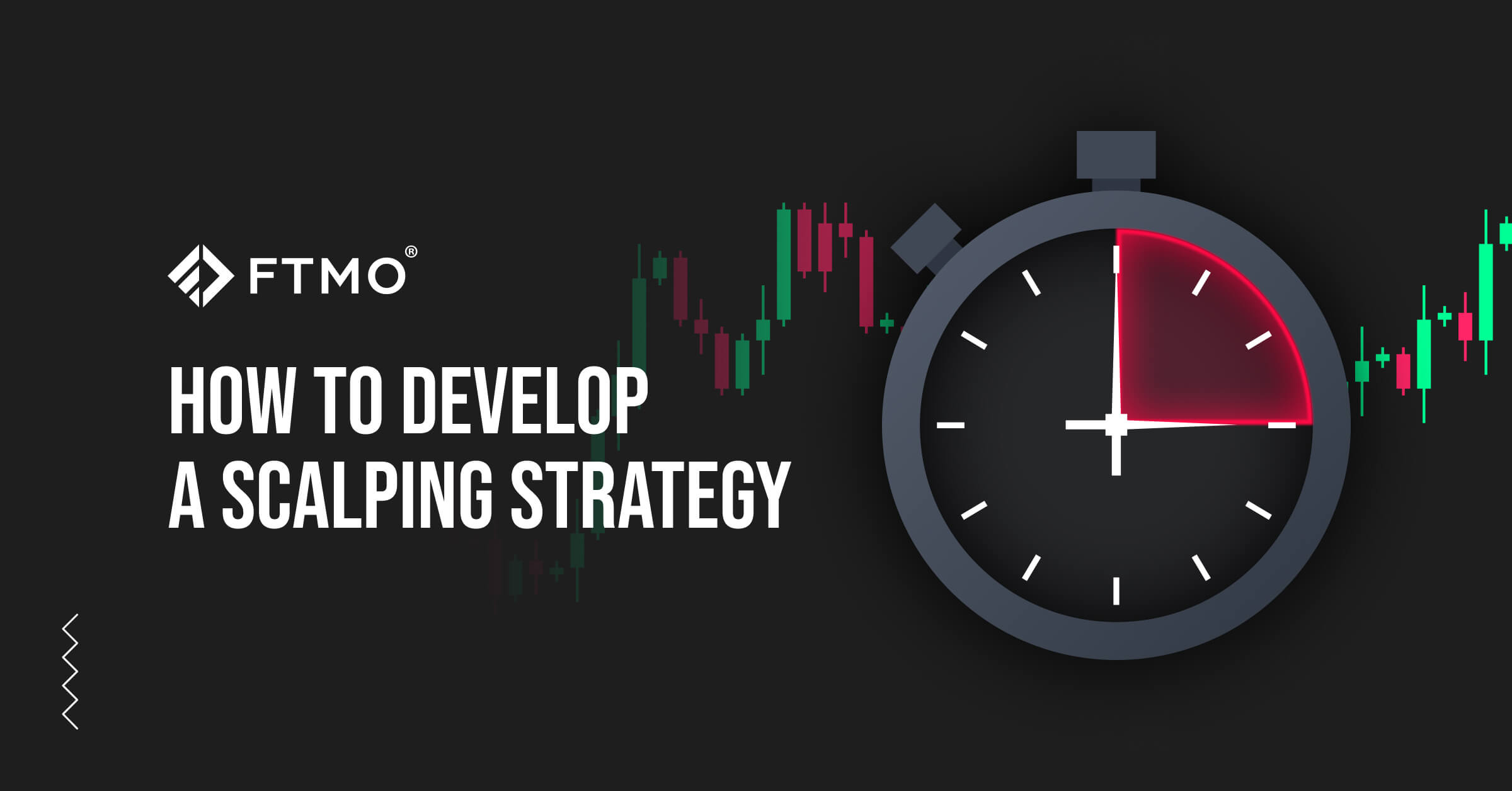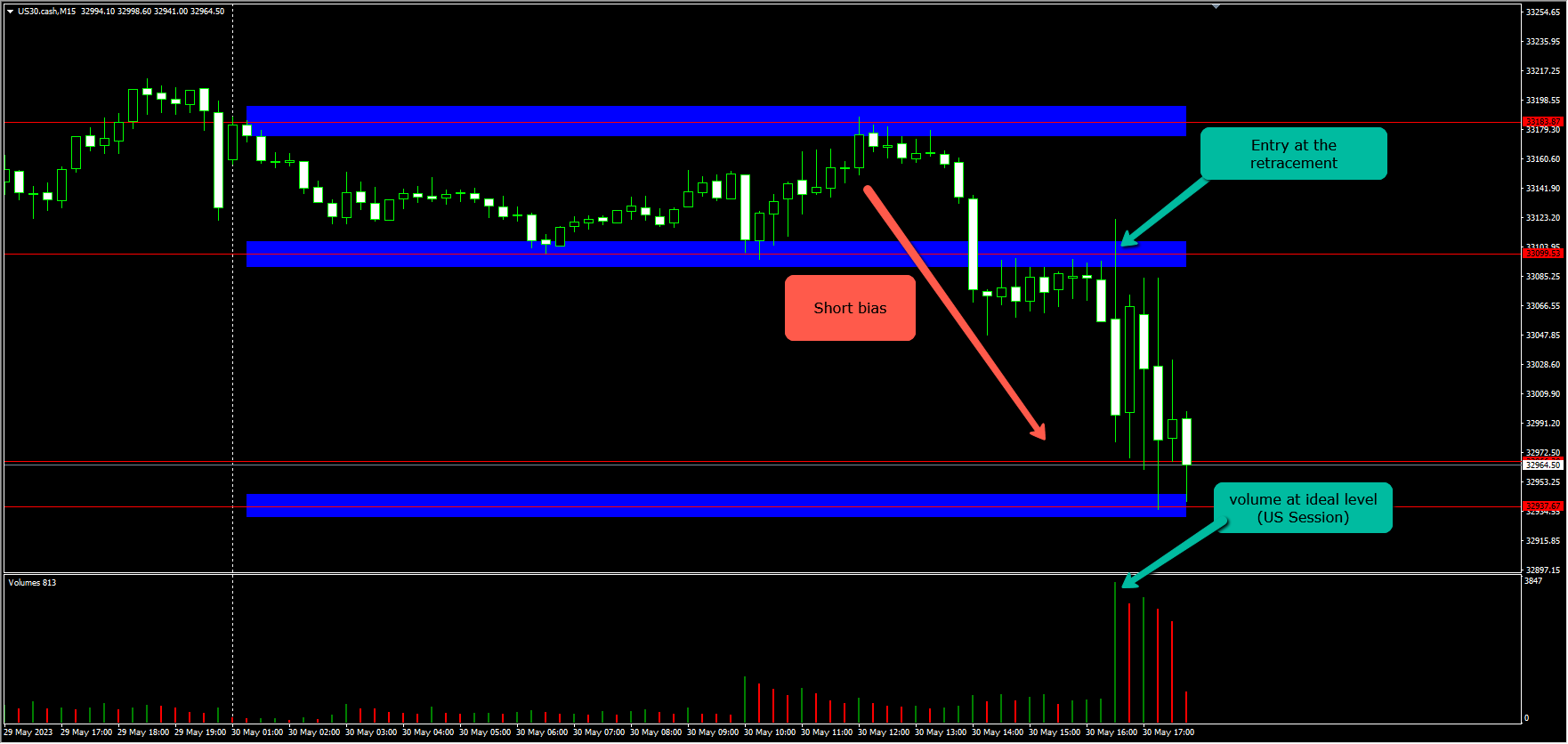
How to Develop a Scalping Strategy
Here are some tips with visual explanations on how to trade using a scalping strategy. Simulated Asset in examples is US30:
Choose Liquid Markets
Scalping is most effective in highly liquid markets, which are often tied to specific market sessions. A good example is the opening of the New York Stock Exchange when traders and investors begin their trading day. The high trading volume ensures frequent price movements, making it easier to capitalize on them. Additionally, many modern prop firms, brokers, and trading platforms offer commission-free trading on indices, which is an advantage you can use to your benefit.
Example: Liquidity in terms of volume can be perfectly illustrated by the chart below.

Use a Reliable Platform
Scalping requires fast order execution, so you need a trading platform that can handle high-speed trades. Choose one that offers quick execution, low latency, and a user-friendly interface. One of the most popular trading platforms is MT5, developed by MetaQuotes. Its long-standing popularity is partly due to its simple programming language, which allows high operating speed and a straightforward interface.
Set Take Profit and Stop Loss Orders
It’s important to set a Take Profit and a Stop Loss for every trade. These help minimize losses and secure profits before the market reverses. As a scalper, you should aim for consistent small gains rather than trying to capture big moves from a single trade. Different traders use different SL and TP levels, but your “exits” should always be justified. Beginners may find it useful to use predefined SL/TP settings.
Example: My strategy is based on Support and Resistance levels, with entries at breakouts. Stop Loss is placed at the nearest resistance level (80 points), and Take Profit is twice the size of the Stop Loss (160 points).
Use Technical Analysis
Technical analysis is essential for scalping. Use indicators such as moving averages, Bollinger Bands, and RSI to identify short-term trends and price action. This allows you to make quick, informed trading decisions.
Example: In the previous example, the breakout would not be fully confirmed because market volume is not at the ideal level. Therefore, the entry would be adjusted accordingly.
Stay Informed
Stay updated on market news and events that may affect the assets you trade. This helps you anticipate price movements and adapt your strategy. Generally, scalpers may want to avoid high-impact news events because the volatility and wider spreads can trigger Stop Losses before Take Profits. However, for determining higher time frame direction, major news events can provide valuable insight.
Example: U.S. Non-Farm Payrolls is one of the major high-impact releases that often triggers strong volatility.
Manage Risk
Scalping is a high-risk strategy, so strict risk management is crucial. Set clear rules, such as a maximum percentage of your account per trade or a limit on the number of trades per day. Don’t chase losses or let emotions drive decisions. Some traders base SL/TP values on money amounts, others on a percentage of account equity. Keep in mind that risk rules may differ between live brokerage accounts and simulated prop firm accounts.
Example: In a live brokerage account, you may risk more since there is no fixed daily drawdown rule. On the other hand, simulated prop firm accounts may have maximum daily loss limits that force you to set Stop Losses accordingly. These limits may also restrict your overall trading account, so you may want to risk less to leave room for potential consecutive losses.
Practice and Refine Your Strategy
Like any trading method, scalping requires practice and refinement. Start with a Free Trial account to develop your skills before trading in the FTMO Challenge. Track your trades and analyze results to identify areas for improvement.
Other Scalping Strategies
Scalping with Moving Averages: Traders use multiple moving averages to identify short-term trends and trade in the direction of momentum. A crossover of a shorter-term moving average above a longer-term one may signal a buy, and the opposite for a sell.
Scalping with Order Flow: This approach focuses on bid-ask spreads, order book depth, and volume to spot short-term imbalances in buying and selling pressure. A sudden surge in orders may signal entry opportunities.
Scalping requires skill, experience, discipline, and fast decision-making, as profit margins per trade are typically small. It also demands access to platforms with low latency and fast execution.
Keep in mind that scalping may not be suitable for all traders. It requires constant market monitoring and can be mentally demanding. Transaction costs such as spreads and commissions can also significantly impact profits, so these must be factored in.
In conclusion, scalping can be a rewarding method if executed properly. To succeed, you need discipline, a solid strategy, and a deep understanding of the market—just as you would for intraday or swing trading. Continuously refine your approach to improve your chances of success, and remember that scalping is a high-risk method, so manage risk carefully and don’t let emotions cloud your judgment.
All information provided on this site is intended solely for educational purposes related to trading on financial markets and does not serve in any way as a specific investment recommendation, business recommendation, investment opportunity analysis or similar general recommendation regarding the trading of investment instruments. FTMO only provides services of simulated trading and educational tools for traders. The information on this site is not directed at residents in any country or jurisdiction where such distribution or use would be contrary to local laws or regulations. FTMO companies do not act as a broker and do not accept any deposits.
About FTMO
FTMO has developed a two-step evaluation process to find trading talents. Upon successful completion, you may be eligible for an FTMO Rewards Account with a balance of up to $200,000 in simulated funds. How does it work?








